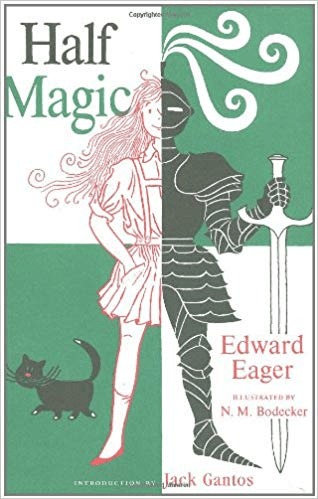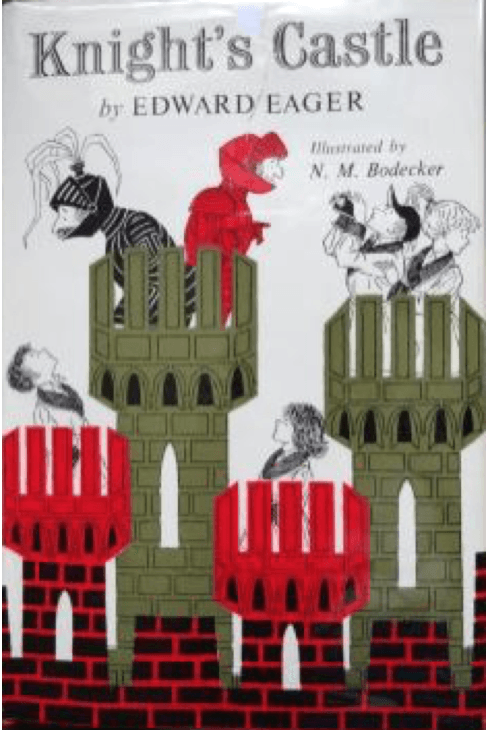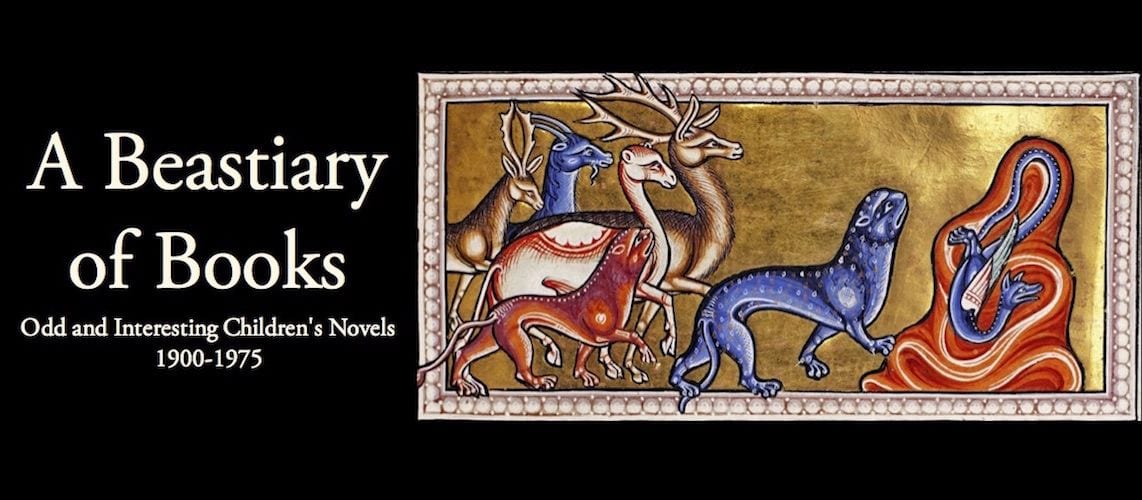Edward Eager wrote seven books about magical doings, all of them modeled after E. Nesbit whom he greatly admired. But where Nesbit is serious or understatedly funny, Eager is straight-up comical. He was a playwright, and it shows in his quick pacing and sharp characterization. Who can resist writing like this?
 “Katharine was the middle girl, of docile disposition and a comfort to her mother. She knew she was a comfort, and docile, because she’d heard her mother say so. And the others knew she was, too, by now, because ever since that day Katharine would keep boasting about what a comfort she was, and how docile, until Jane declared she would utter a piercing shriek and fall over dead if she heard another word about it. This will give you some idea of what Jane and Katharine were like” (Half Magic, pp. 3-4).
“Katharine was the middle girl, of docile disposition and a comfort to her mother. She knew she was a comfort, and docile, because she’d heard her mother say so. And the others knew she was, too, by now, because ever since that day Katharine would keep boasting about what a comfort she was, and how docile, until Jane declared she would utter a piercing shriek and fall over dead if she heard another word about it. This will give you some idea of what Jane and Katharine were like” (Half Magic, pp. 3-4).
 Half Magic is the best known of Eager’s books, and it is indeed excellent. But his very best is arguably Knight’s Castle. While Eager excelled at style, he was weak at plotting, and this book is his best plotted.
Half Magic is the best known of Eager’s books, and it is indeed excellent. But his very best is arguably Knight’s Castle. While Eager excelled at style, he was weak at plotting, and this book is his best plotted.
The children in Knight’s Castle, a set of four cousins, set up a toy castle and medieval figurines, along with some inherited toy soldiers, to enact the story of Ivanhoe. The bedroom fireplace becomes the court of the wicked Prince John, and a forest is created on the carpet for Robin Hood and his merry men. The magic starts when the oldest of the soldiers comes alive in the hand of one of the children, and then in the middle of the night the children are transported into the world of the castle.
Their well-intentioned interference causes problems for the story-line of Ivanhoe, so they need to return to set things right. But it gets worse: in the daytime the children, inspired by Nesbit’s The Magic City, extend the castle’s world by building a city out of household objects — books and drinking glasses and perfume botttles and bars of soap. These changes become real the next time they enter the world of the castle, and Eager-esque shennigans ensue. Knights and ladies drive around in toy cars, a doll-house rejected by the children in the daytime turns out to contain vengeful giants, and there is a flying saucer that is genuine Wedgewood. In the delightfully loopy climax, there is a sword-in-the-stone moment with a can-opener, resulting in pea soup for all.
